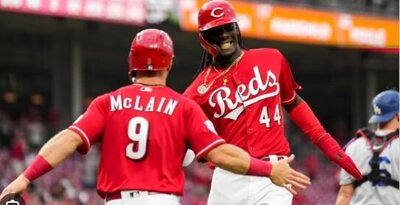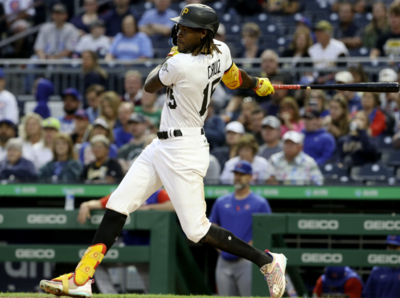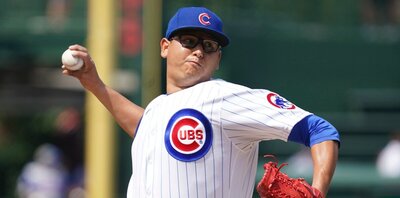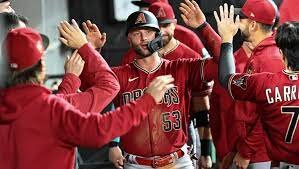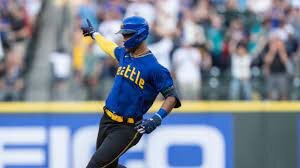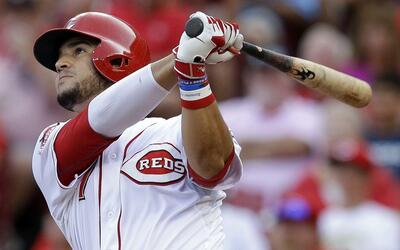Hiroki Kuroda (SP-NYY)- Kuroda was fantastic in his outing against Oakland on Friday even though he did not earn a decision. He allowed two runs on two hits and two walks while striking out three in eight innings of work. The right-hander lowered his ERA to 2.78 in the process, and continues to be one of the most consistent pitchers in the American League. His 3.45 FIP and 4.04 xFIP might not be as impressive as one might think, but it is worth noting that his strikeout rate (6.18 K/9) could see some improvement considering his 9.9 percent swinging strike rate. His strand rate (79.3 percent) and BABIP (.249) will see some regression in the second half of the season. However, he should be able to pitch to this type of walk rate for most of the season. I expect him to finish the season with an ERA around 3.30 once again.
Chris Davis (1B-BAL)- Davis went 2-for-6 with three strikeouts, two RBI and the game-winning hit to lead the Orioles past the Red Sox in extra innings last night. The first baseman is hitting .338/.417/.688 with 21 home runs in 288 plate appearances. Having an MVP type of season, Davis currently has a wRC+ of 193 along with a .350 ISO and has righted himself after a recent slump. Davis has always had this kind of power (career high 28.4 percent HR/FB rato), but he is hitting more fly balls this season (42.3 percent) and he has managed his strikeout rate. While he does strikeout too often, his 24.5 percent rate is a career low and his 13.5 percent swinging strike rate (also a career low) lets owners know that this has not been a fluke. His overall average is a little inflated because of his .390 BABIP, but that number will not have that much regression considering his career rate of .346.
Jeremy Hellickson (SP-TB)- All things were going smoothly for Hellickson owners on Thursday night until the right-hander encountered a rough sixth inning. He was tagged for his third loss of the season after allowing eight runs on 10 hits (no walks) while striking out four in 5.2 innings of work. Unlike past seasons, Hellickson's ERA (5.67) is significantly higher than his FIP (4.20) and xFIP (4.05). He has managed to improve to career bests as a full time starter (6.93 K/9 and 2.00 BB/9), but he has been hurt by an extremely low strand rate (60.6 percent) and higher BABIP (.298). Many have been expecting Hellickson to eventually regress, but he is a better asset than his ERA would lead one to believe. He came into the game with a batted ball profile similar to his career rate, and his strand rate should continue to improve over time.
Casey Janssen (RP-TOR)- Janssen recorded his fourteenth save of the season on Thursday night in the Blue Jays win over the Rangers. He threw a shutout inning in which he did not allow a runner to reach base. Janssen's ERA currently sits at 2.49 for the season, and he has been able to maintain a strong strikeout rate (8.72 K/9) even though his average fastball and cutter velocity have dropped in 2013. He has displayed excellent control over the last few seasons, and his 1.25 BB/9 is one of the best among relievers. A 2.59 xFIP indicates that owners should not expect him to regress even with his fortunate .218 BABIP. His 8 percent swinging strike rate is his lowest since 2009, so his strikeout rate might decline somewhat. However, Janssen still remains on the better AL options at the position with his ability to limit walks and home runs.
Josh Willingham (LF-MIN)- Willingham went 0-for-3 with a strikeout in the Twins loss to the Phillies on Thursday night. While he does have ten home runs on the season, his slash line dropped to .214/.353/.417 after last night's performance. As expected, Willingham's HR/FB ratio has dropped from his career high in 2012 (21.2 percent) and come back down closer to his career rate (14.3 percent). However, Willingham's problems have correlated with his career low BABIP (.258). This has stemmed from the fact that he has produced a meager 12.7 percent line drive rate (lowest in majors among qualified hitters), and a 24.3 percent infield fly ball rate (second highest in majors). It's actually quite astonishing that his average is not below .200 considering his batted ball profile. Willingham still manages to get on base a lot with his 13.5 percent walk rate, but his average will not improve without some serious adjustments. The good news is that if those adjustments get made, it is likely Willingham improves his HR/FB ratio.
Follow me on Twitter for baseball info and other miscellaneous ramblings.



